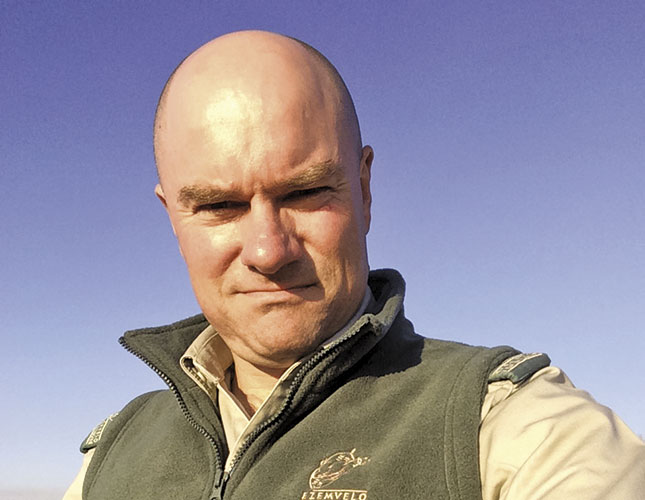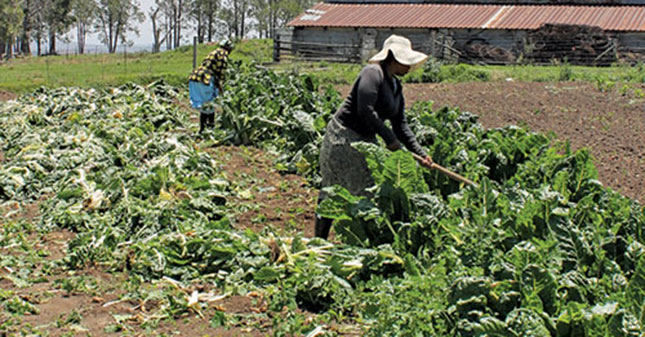
Photo: Courtesy of Greg Martindale
Tell us about the work that you do.
I’ve been the Biodiversity Stewardship Programme (BSP) manager at Ezemvelo KwaZulu-Natal Wildlife since October 2011 and I’m responsible for co-ordinating this programme in KZN. It’s a protected area expansion tool for securing remnant biodiversity, working with private and communal landowners to create new protected areas.
READ:SONA 2017: what agri leaders want to hear from Zuma
The BSP was established to create a fully representative protected areas system and to meet South Africa’s obligations in terms of the Convention on Biological Diversity to secure 12% of our land within protected areas. The idea of the programme is to support the conservation efforts of landowners through providing advice and expertise, and through securing incentives for conservation land use.
We’ve secured approximately 100 000ha of land as new protected areas in KZN and we’re currently negotiating with landowners across the province to secure further areas totalling about 175 000ha.
What are your views on environmental and wildlife conservation as potential contributors to poverty alleviation in rural South Africa?
I believe that conservation as a land use can compete effectively with other forms of land use, including agriculture. The growth in South Africa’s game ranching industry over the last 20 years has been remarkable, with the tourism, hunting and wildlife ranching sectors now major employers and foreign exchange earners.
There are now over 10 000 game ranches collectively covering about 20,5 million hectares. This compares with the 7,5 million hectares that make up our national parks system. The hunting industry was valued at R6,5 billion in 2012. Furthermore, South Africa’s game ranches employ a higher proportion of staff than conventional livestock farms, and the nature of game ranching allows for multiple activities – tourism, hunting, sales of live game and the commercial production of venison – to be conducted on the same site.
Absa’s 2012 Agricultural Outlook showed that world demand for venison is approximately 100 000t annually. World venison supply is about 40 000t a year, to which South Africa currently contributes only about 2 000t annually in exports. Much of our country’s land is marginal agriculturally and far better suited to land uses such as game ranching.
What hurdles are there to utilising environmental and wildlife conservation as potential contributors to poverty alleviation in rural South Africa?
Traditionally, environmental issues and conservation have been seen as obstructions to development and progress, and this mindset has hindered conservation from being a proponent of economic development and job creation in South Africa. Poverty alleviation in rural areas has primarily focused on traditional notions of agriculture. However, this mindset is changing, largely through the programmes being promoted by the national Department of Environmental Affairs (DEA) such as the Wildlife Economy Programme.
The other significant hurdle lies in the substantial capital cost required to establish a commercial game ranching venture. Game fencing currently costs about R100 000/km and the costs of purchasing game, employing staff and constructing infrastructure such as game lodges can be huge. It’s therefore difficult to establish new game ranching ventures that can be financially viable in the short to medium term.
What enabling factors are there for utilising environmental and wildlife conservation as potential contributors to poverty alleviation?
Initiatives such as the Working for Water Programme have been highly successful in restoring the environment and alleviating rural poverty, and there’s growing recognition of their importance. The DEA has identified the potential of industries such as hunting and game ranching to provide meaningful opportunities for poverty alleviation and development in rural South Africa.
In response, the DEA has developed its Wildlife Economy Programme, which seeks to provide funding and assistance to rural communities for establishing and operating their own commercial game ranching enterprises. The funding covers costs such as game fencing, the construction of abattoirs and tanneries, and staff training. The BSP and its partners help to provide the expertise and oversight required to make such projects a success, while also ensuring that government’s investment in the projects bears fruit.
The importance of this cannot be overstated because much of the research done on South Africa’s land reform process has shown a lack of adequate extension services to be one of the major barriers to successful land reform projects.
Are South Africa’s land reform beneficiaries a potential avenue for combining environmental and wildlife conservation with rural poverty alleviation?
Absolutely. Conservation offers great potential to land reform beneficiaries. In some cases, the land that the beneficiaries successfully claim may already be used for activities such as game ranching. However, even where this isn’t the case, it’s possible that game ranching activities could be more lucrative for the beneficiaries than more traditional forms of agriculture, particularly livestock production. Tourism, hunting and commercial game ranching provide greater potential for increased employment and higher earnings than livestock production.
Tell us more about the work being done with land reform beneficiaries in KZN.
We’re engaging with a number of land reform sites within the BSP. However, this isn’t the only form of communal land tenure that we engage with. For instance, we’re involved with land owned by KZN’s Ingonyama Trust that falls under the jurisdiction of traditional authorities. The main focus of all these sites is on development of environmental and wildlife conservation, and on game ranching.
We’re also actively involved with land reform, the establishment of commercial livestock farming ventures owned by communal co-operatives on Ingonyama Trust sites, and in sites where extensive ecological restoration projects are underway. For example, we’re working with two traditional authorities in the Upper uThukela River catchment who are undertaking extensive invasive alien plant control and donga rehabilitation projects, integrated with improved cattle farming techniques.
We’re also involved in Babanango, near Ulundi, a site that has been successfully claimed by about 200 families. The land covers more than 13 000ha and most of it has historically been used for commercial cattle farming, with limited game ranching and tourism. The entire site, which runs down to the iMfolozi River, together with a further 6 000ha on the northern side of the river, would make a 19 000ha protected area that would be ideal for tourism, hunting and commercial venison production.
The business plan identifies the potential for creating 160 jobs. This far exceeds the number of jobs that would be created if the site were used for more traditional agricultural practices.
How do land reform beneficiaries feel about your proposals?
Like most landowners, communities want to gain employment and earn an income from their land. The potential for economic development and job creation on their land, together with the support that they get from the partners in the BSP, are big motivators for poor rural communities to use their land for environmental and wildlife conservation. Having this support structure in place is invaluable to the communities.
It’s not unusual to have resistance to the proposals from individuals within communities because people have different priorities and desires. So it’s important that material benefits emerge from using land for conservation. If communities can see the benefits of this over other forms of land use, resistance to the notion will largely be overcome.
The BSP’s partners don’t see these initiatives as short-term interventions but as long-term partnerships in which land reform beneficiaries and other communities are assisted with resources and expertise to get their ventures up and running successfully. If any activity is to generate meaningful income, it must meet the high standards required. The BSP’s partners have a role to play in securing the biodiversity associated with a site, but it’s important that a community is invested in the initiative and wants to make a success of it.
Who can land reform beneficiaries, and communities on communal land, contact for more information?
The SA National Biodiversity Institute, the DEA and the Department of Rural Development and Land Reform have jointly launched the Land Reform and BSP. Through this, these departments aim to work together to drive biodiversity stewardship initiatives that enable land reform beneficiaries and communities on communal land to benefit from conservation.
The exciting point is that there is a high-level, national acknowledgement of the role that conservation can play in economic development and job creation, particularly in some of South Africa’s poorest rural areas.
Phone Greg Martindale on 033 239 1888 or 082 804 4412, or email him at [email protected].
This article was originally published in the 23 January 2015 issue of Farmer’s Weekly.













